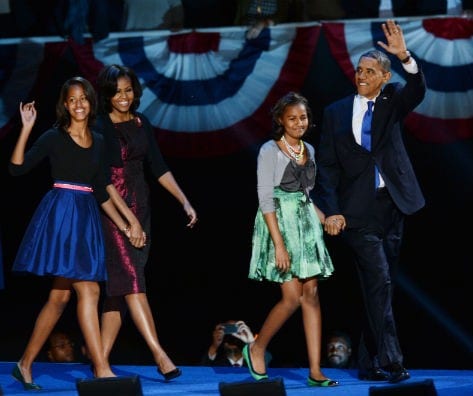It didn’t begin well. The first memory I have of 2012 is seared onto my brain. It is of Prime Minister Julia Gillard being clutched to the bosom of a burly security man and being half carried, half dragged away from a group of irate demonstrators, who were actually baying for Opposition leader Tony Abbott’s blood. She had tripped while being hustled away and lost a shoe, hence the unseemly footage. It reminded me of the old movies I used to hate as a kid where it was always the heroine who tripped and fell when running away from the baddies so that the hero got to prove his bravery by rushing back into the teeth of danger to save her.

Such blatantly self-serving portrayals of the reactions of men to danger by male filmmakers got right up my nose even then. Women were weak and needed big strong men to rescue them, those movies were telling us, and that’s not what I wanted to be reminded of when I looked at our first female PM. At the time it seemed to be mostly overlooked that Gillard’s first thought when told that things were getting dangerous was not for herself, but for the safety of Abbott.
Gillard had another wardrobe malfunction later in the year and again it was her shoes that let her down, causing her to faceplant spectacularly. Interestingly, this incident passed with much less of a flurry.
The polls at the beginning of the year were hideous for Gillard, although they weren’t much better for the Opposition leader. And women like me were growing weary of the excessive level of vitriol and sneering that was being directed at the PM mostly, it seemed, for daring to be a woman and hold such high office. Just like the lame (in every sense of the word) heroines of those old movies, a message was being sent to girls with every word of gendered abuse hurled at Gillard. Quite simply the message was: Don’t aspire to high office, girlie, because this is how we will treat you. Journalist Wendy Harmer bravely made this point publicly and, of course, received another bucket of gendered abuse for her trouble. I can (and have) criticised many of Gillard’s policies particularly on education and asylum seekers, but “the worst prime minister we’ve ever had” always seemed way over the top to me. Turns out it seemed that way to a lot of other women too and not a few men.
The next memory is better. It is secretary of state Hillary Clinton’s brilliant response to the meme that was created of her staring solemnly at her BlackBerry. Texts from Hillary began with two young guys posting ideas of who she might be texting and what she might be saying to them. It took off like a rocket and finally exploded into the stratosphere when Clinton created her own witty and deft meme in response. Already considered to be doing a phenomenal job as secretary of state, she became the coolest woman in the world over 60, including Helen Mirren and Meryl Streep. At last, there was a credible, funny and courageous example of a woman in power.
Then Anne Summers delivered her brilliant and forensic analysis of the gendered abuse being thrown at Gillard in the speech to Newcastle University called Her Rights at Work. It hit a nerve and gave women the ammunition they needed.
Then the carbon tax became a reality and when the sky didn’t fall Gillard’s approval ratings began to rise.
In September, Sydney broadcaster Alan Jones let rip at Gillard again. He already had considerable form. In reaction to Gillard promising a couple of million in aid to help more women in the Pacific region gain leadership positions (there is much research which shows when there are more women in positions of power domestic violence rates fall, and domestic violence is very high in the Pacific) Jones suggested that women like Sydney Lord Mayor Clover Moore and ex Victorian Police commissioner Christine Nixon were “destroying the joint” and that there wasn’t a chaff bag big enough for them – a reference to a previous suggestion that Gillard be sewn into a chaff bag and thrown out to sea.
That night, women hit Twitter in droves and had a great deal of fun telling the world the ways in which they were currently #destroyingthejoint. The hashtag trended worldwide and a Facebook page, merchandise and more sprang into being. For the first time, women didn’t have to cop insults about their gender in impotent silence. Thanks to social media and the unmediated (by men) access it gave them to the public conversation they could – and did – make their point of view heard and heard loudly.
Only a few weeks later, soon after the death of Julia Gillard’s much loved father, Alan Jones said at a dinner that John Gillard had “died of shame” because his daughter had told so many lies. An attendee wore a suit made from chaff bags. This time #destroythejoint got serious. Businesses discovered there was a high price to pay for continuing to advertise on Jones’ program. The chaff bag wearer lost his job. Major sponsors left 2GB promising never to return, costing the station more than $1 million. More than that, polls revealed that Tony Abbott, never popular with women, was sinking further in their estimation. In response, he turned to his wife Margie who confidently outed her husband as having been a closet feminist all along. The significance of the most socially conservative candidate for PM for decades having to call himself a feminist to have a chance at re-election was not lost on many who really were – feminists, that is.
Only a few days later, Tony Abbott used the same phrase about dying of shame in a debate over former parliamentary speaker Peter Slipper’s sleazy texts about female genitalia. Gillard, shaking with what appeared to be genuine fury, rose and delivered the speech of her life. The “misogyny speech”, as it has come to be known, resonated around the world with more than 2 million hits on YouTube. Women who watched it alternatively wept and punched the air as Australia’s first female prime minister put into words what many of them had felt and struggled against for their entire working lives.
Next morning, what is becoming rather disparagingly referred to as the “mainstream media” – or MSM – to a man and, sadly, woman, reported the speech as cynical, a distraction and a failed ploy. But as they found out almost immediately, the days of the MSM being able to set the parameters of debate are now over. Women were not having a bar of it. The reporting of the speech by the gallery was pilloried and mocked. Many journos belatedly changed their tune. The disconnect between how women heard the speech and how political journalists reported it became as much the story as the speech itself.
Finally, the year drew to a close with President Barack Obama winning a second term against the confident predictions of many. But it was not just his win that mattered: it was that once again women, especially single women, were the voters who got him across the line. Obama won 90% of the African American vote, 70% of the Latino vote and 55% of the female vote. Women are 53% of the US population and are also more likely to vote than men. Given they had to fight for the right in the first place, it makes sense they would value it more.

Right-wing Republicans are now faced with a real and painful dilemma. The religious values they see as central to their platform are the very same ones that stop women, particularly single women, from voting for them. A dogmatic, male-centric attitude to reproductive rights could possibly see them kept out of office for a very long time.
Far from feminism being dead, as was so confidently stated by so many until very recently, social media and the power it gives women to voice their opinions and band together to offer encouragement and support, has brought it roaring back onto the agenda. If 2012 is any guide, social media could prove to be as revolutionary for women and their role and opportunities as the invention of the pill was in the 1960s. If I am right, 2013 could be even more exciting.
NB: I would like to dedicate this column to the memory of Victoria Soto, Dawn Hochsprung, Mary Sherlach, Lauren Rousseau, Rachel D’Avino and Anne Marie Murphy; teachers and staff members of Sandy Hook Elementary School in Newton, Connecticut. All were killed trying to protect their students.
My daughter is a teacher.







